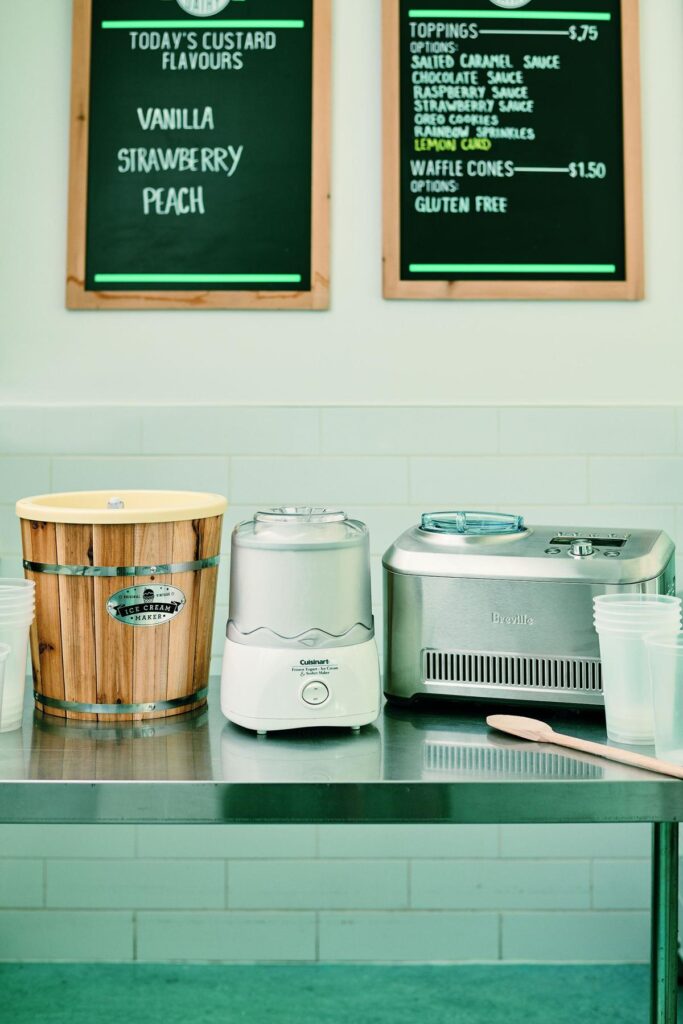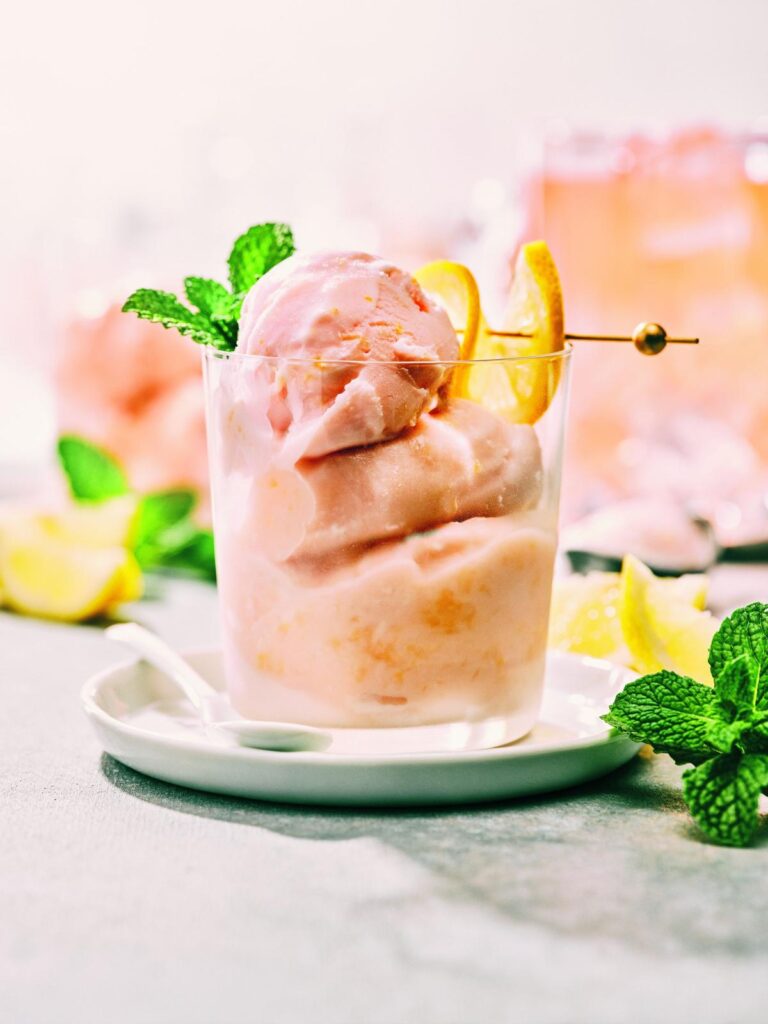Can you imagine a life without ice cream? We can’t, so we’re thrilled to have a copy of Great Scoops, the brand new cookbook from Ottawa’s Merry Dairy, which has been serving original recipe frozen custard and premium ice cream from their shop on Fairmont Avenue and mobile fleet of Grumman trucks since 2012. The book covers everything there is to know about making both dairy and vegan ice creams and frozen desserts at home, as well recipes for signature sauces, toppings and baked goods. Read on for a primer to get you started, and some sample recipes that show just how easy it is to produce a great scoop of your own.

The Basics
Ice cream making doesn’t require a big investment in time or equipment. Nor does it require a chemistry degree or years of cooking school. But since some grasp of the basic science of frozen treats is helpful, we’ve equipped you with that in these pages.
The rewards in artisanal ice cream making (beyond the obvious pleasure of consuming the end product) are found mostly in the small details. We’ve addressed all those throughout this book, including in a helpful “Trouble-Scooping” section of common errors explained and solved. That said, ice cream making can be mastered easily and, with attention to the basics and a bit of practice, you’ll be a whiz at ice cream making in no time.
Which Machine Should I Buy?
There’s no need to break the bank on a high-end machine in order to make great ice cream. In essence, the machine you buy will have two jobs: to freeze and to incorporate air into the custard by churning. Any one will do those jobs.
Rock Salt, Ice and Elbow Grease
Actually, you don’t need a machine if you’re prepared to work up a sweat. (Or so is that a “human machine”?)
You can buy hand-cranked or motorized machines of various sizes (wood, stainless steel or plastic) or just manage the job with a large bowl, whisk, bucket of ice and generous amount of rock salt. Burrow your bowl into the ice and salt (the salt lowers the freezing point of ice), pour in the custard and whisk until it starts to thicken. Once semi-frozen, place the bowl in the freezer for 10–20 minutes, then return to the ice bath to whisk for another 10 minutes or so. Enjoy as is, in a soft state, or freeze overnight for parlour-style hard-scooped ice cream.
This method requires the longest time of all the methods to freeze the ice cream base, and results aren’t as consistent as they are with freezer bowls or built-in freezer machines, but rock salt, ice and elbow grease is the most affordable way to make ice cream.
Freezer Bowl
Before launching a flavour for large-scale production at The Merry Dairy, we test new batches in our two-quart Cuisinart freezer-bowl machine. These ice cream makers work by pre-freezing a double-walled bowl that, when inserted into the machine with a rotating paddle, churns and freezes the custard base as the internal coolant in the bowl thaws. The process takes about 20–40 minutes. There are fancier machines on the market, but we believe these freezer-bowl machines are light, easy to store and offer the best value. Since the bowl must be frozen between uses, you cannot make consecutive batches, but for about $100, the price is right. You could even buy two…
Compressor Machine
These powerhouses make creating many batches of ice cream a breeze—and with no bowl to pre-freeze. An internal compressor cools the machine, churns and freezes the custard base and stops the churning automatically once it senses the ice cream is ready. It will also hold the finished product at a freezing temperature. While these machines make easy work of ice cream making, they have drawbacks—they are heavy, take up valuable counter space and can be quite expensive. Still, for making ice cream on a whim, or many flavours in a day, this is your machine.
Coconut Milk and Coconut Cream
For the base of our vegan ice cream recipes, we use cans of high-quality coconut milk. The brands we use (Aroy-D and Cha’s Organics) contain only coconut and water and no other ingredients (such as stabilizers or emulsifiers; the latter won’t allow the cream to separate from the milk). Our vegan recipes call for three cans of coconut milk, two of which are refrigerated to yield a rich coconut cream. When a can of coconut milk is chilled, the solid white mass of coconut cream (coconut fat) separates from the pale coconut water and rises to the top, allowing it to be scooped up easily.
There is a bewildering array of options for coconut products on market shelves. Avoid refrigerated “milk alternative,” low-fat or “light” (aka “lite”) coconut milk or sweetened products labelled “creamed coconut” or “cream of coconut.” Many of these products contain additives that affect not only the clean flavour of the milk but also its ability to separate. So read the label before buying: the ingredient list should be very short!
Excerpted from Great Scoops: Recipes from a Neighborhood Ice Cream Shop by Marlene Haley and Amelia Ryan of The Merry Dairy with Anne DesBrisay. Photographs by Christian Lalonde. Copyright © 2022 by The Merry Dairy. Excerpted with permission from Figure 1 Publishing. All rights reserved. No part of this excerpt may be reproduced or reprinted without permission in writing from the publisher.
Click on the images below to make some great scoops of your own.






